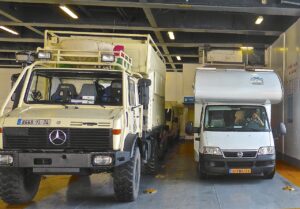Campervan or converted 4x4
 The initial decision lies in choosing between a campervan or a 4×4 vehicle for your overlanding adventure. Overlanding is adaptable to various vehicle types, each presenting its own set of advantages and drawbacks, closely tied to your lifestyle and preferred mode of travel.
The initial decision lies in choosing between a campervan or a 4×4 vehicle for your overlanding adventure. Overlanding is adaptable to various vehicle types, each presenting its own set of advantages and drawbacks, closely tied to your lifestyle and preferred mode of travel.
The campervan, a popular choice for overlanding, comes in a myriad of options. Ranging from opulent 40-foot-long campers and converted buses to self-customized transport vans, the variety seems endless.
All campervans share a common requirement—they must provide a sleeping space and a kitchen equipped with running water. Many also include a compact bathroom with toilet and shower facilities, along with climate control features like air conditioning and heating. Essentially, campervans are akin to small houses on wheels. However, their limitations often revolve around being suitable primarily for paved roads due to lower ground clearance and the absence of 4-wheel drive capabilities. Additionally, as the size and height of the vehicle increase, maneuvering in tight spaces becomes more challenging, limiting access to official campgrounds or RV sites with essential amenities.
For those inclined towards exploring less-traveled paths and seeking the thrill of camping in the wild, a converted 4×4 vehicle emerges as a more fitting option. While sacrificing some interior space and amenities, a 4×4 vehicle promises a more adventurous lifestyle. Off-roading becomes a viable option, and even on moderately maintained roads, you can reach unique and secluded destinations. Enhanced maneuverability and higher ground clearance facilitate easy navigation through remote areas, enabling you to camp in the wilderness with greater ease.
